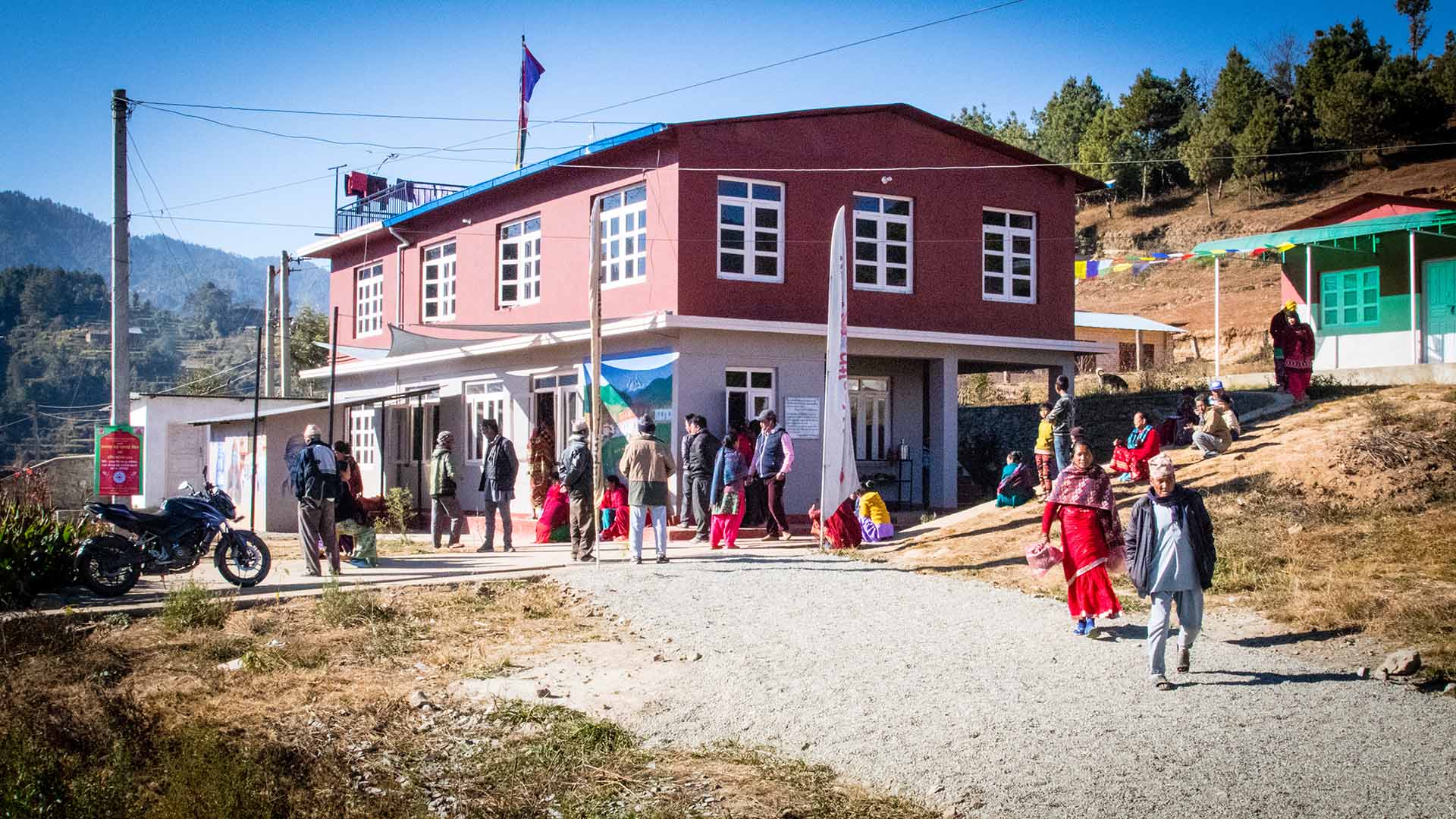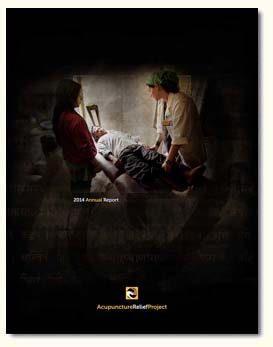VOLUNTEER COMMUNITY CARE CLINICS IN NEPAL
Nepal remains one of the poorest countries in the world and has been plagued with political unrest and military conflict for the past decade. In 2015, a pair of major earthquakes devastated this small and fragile country.
Since 2008, the Acupuncture Relief Project has provided over 300,000 treatments to patients living in rural villages outside of Kathmandu Nepal. Our efforts include the treatment of patients living without access to modern medical care as well as people suffering from extreme poverty, substance abuse and social disfranchisement.
Common conditions include musculoskeletal pain, digestive pain, hypertension, diabetes, stroke rehabilitation, uterine prolapse, asthma, and recovery from tuberculosis treatment, typhoid fever, and surgery.
FEATURED CASE STUDIES
Rheumatoid Arthritis +
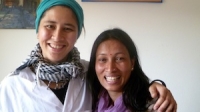
35-year-old female presents with multiple bilateral joint pain beginning 18 months previously and had received a diagnosis of…
Autism Spectrum Disorder +
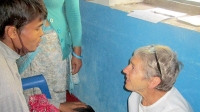
20-year-old male patient presents with decreased mental capacity, which his mother states has been present since birth. He…
Spinal Trauma Sequelae with Osteoarthritis of Right Knee +
60-year-old female presents with spinal trauma sequela consisting of constant mid- to high grade pain and restricted flexion…
Chronic Vomiting +
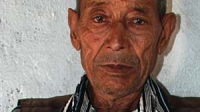
80-year-old male presents with vomiting 20 minutes after each meal for 2 years. At the time of initial…
COMPASSION CONNECT : DOCUMENTARY SERIES
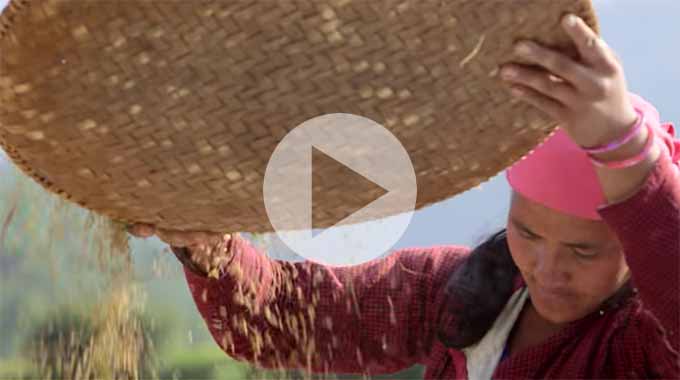
Episode 1
Rural Primary Care
In the aftermath of the 2015 Gorkha Earthquake, this episode explores the challenges of providing basic medical access for people living in rural areas.
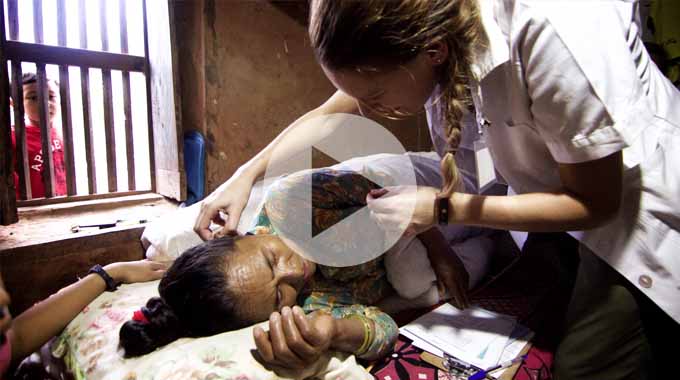
Episode 2
Integrated Medicine
Acupuncture Relief Project tackles complicated medical cases through accurate assessment and the cooperation of both governmental and non-governmental agencies.
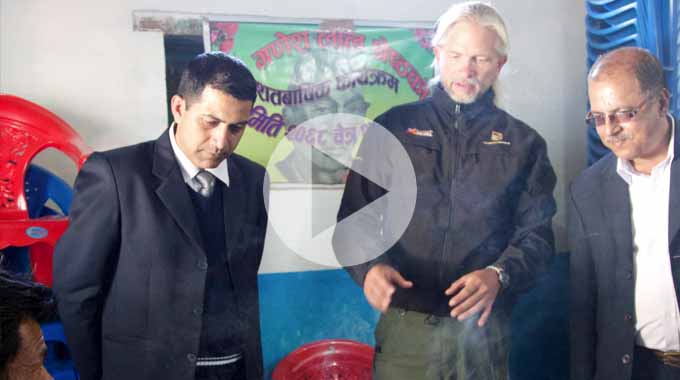
Episode 3
Working With The Government
Cooperation with the local government yields a unique opportunities to establish a new integrated medicine outpost in Bajra Barahi, Makawanpur, Nepal.
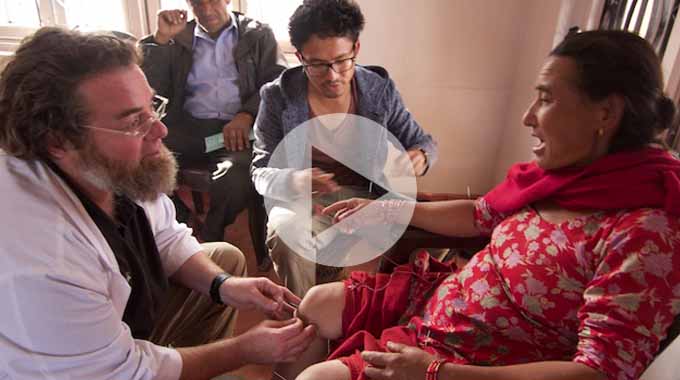
Episode 4
Case Management
Complicated medical cases require extraordinary effort. This episode follows 4-year-old Sushmita in her battle with tuberculosis.
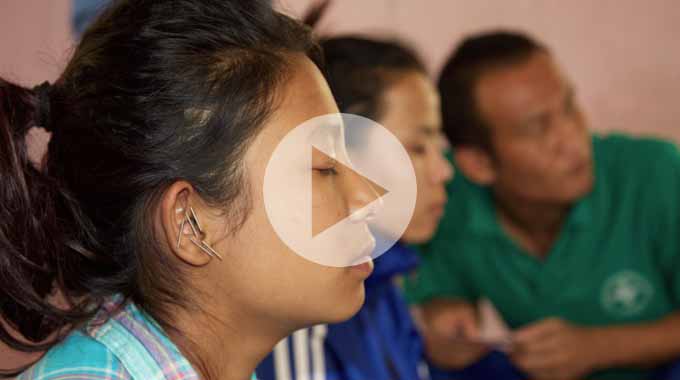
Episode 5
Sober Recovery
Drug and alcohol abuse is a constant issue in both rural and urban areas of Nepal. Local customs and few treatment facilities prove difficult obstacles.
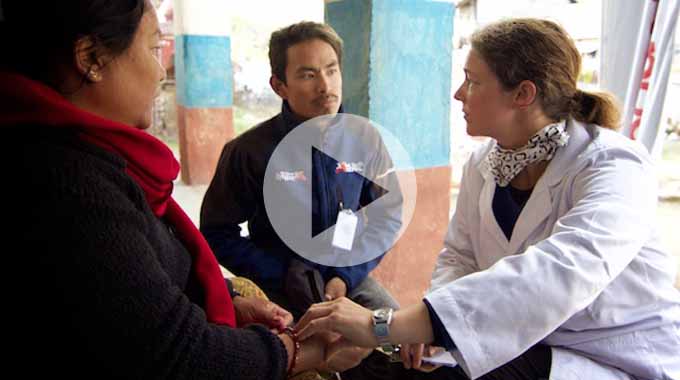
Episode 6
The Interpreters
Interpreters help make a critical connection between patients and practitioners. This episode explores the people that make our medicine possible and what it takes to do the job.
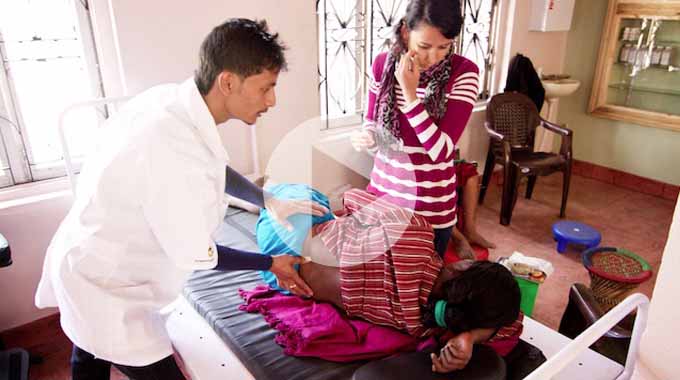
Episode 7
Future Doctors of Nepal
This episode looks at the people and the process of creating a new generation of Nepali rural health providers.
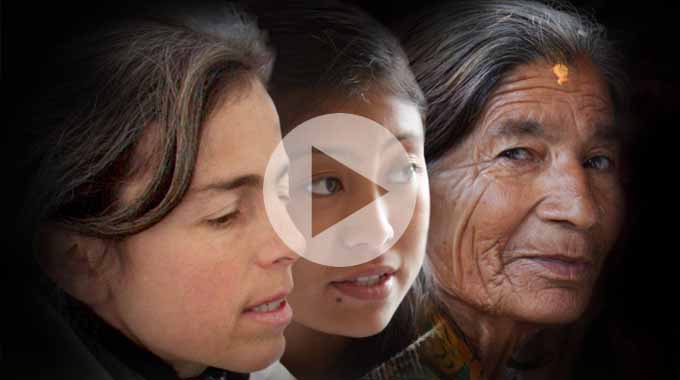
Compassion Connects
2012 Pilot Episode
In this 2011, documentary, Film-maker Tristan Stoch successfully illustrates many of the complexities of providing primary medical care in a third world environment.
From Our Blog
2015 Annual Report
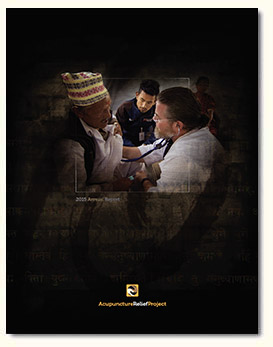 In 2015, the Acupuncture Relief Project continued clinical projects in Bhimphedi and constructed an new clinic in the municipality of Bajra Barahi, Makawanpur. Operating in Bajra Barahi for the first time we provided over 12,000 visits to over 5,000 new patients from September 6th, 2015 to March 1st, 2016. This initial clinic camp helped us forge new relationships with the regional government and local healthcare establishment. We now have our much needed training and clinical platform that we have been working towards of many years.
In 2015, the Acupuncture Relief Project continued clinical projects in Bhimphedi and constructed an new clinic in the municipality of Bajra Barahi, Makawanpur. Operating in Bajra Barahi for the first time we provided over 12,000 visits to over 5,000 new patients from September 6th, 2015 to March 1st, 2016. This initial clinic camp helped us forge new relationships with the regional government and local healthcare establishment. We now have our much needed training and clinical platform that we have been working towards of many years.
2013 Annual Report
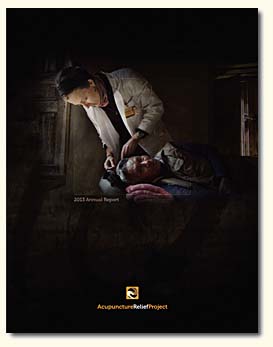 In 2013, the Acupuncture Relief Project undertook a courageous challenge of opening three experimental clinics in the remote regions of Bhimphedi, Kogate and Ipa, all villages in the District of Makawanpur. For the first time since we began working in Nepal (2008), we achieved a full partnership with the local government. Operating under the Nepal Social Welfare Council in cooperation with the Makawanpur District Health Office, we are now subject to the necessary oversight, inspection and reporting requirements of other governmental and private healthcare institutions. While this adds some level of expense, bureaucracy and complexity to our operation, it also allows us a new level of authority and access to government assets such as facilities and medications.
In 2013, the Acupuncture Relief Project undertook a courageous challenge of opening three experimental clinics in the remote regions of Bhimphedi, Kogate and Ipa, all villages in the District of Makawanpur. For the first time since we began working in Nepal (2008), we achieved a full partnership with the local government. Operating under the Nepal Social Welfare Council in cooperation with the Makawanpur District Health Office, we are now subject to the necessary oversight, inspection and reporting requirements of other governmental and private healthcare institutions. While this adds some level of expense, bureaucracy and complexity to our operation, it also allows us a new level of authority and access to government assets such as facilities and medications.
In our first three months here, we provided over 7000 primary care visits. Our volunteer practitioners work 6 days per week and they tackle some of the most difficult medical cases found in any modern hospital. Tuberculosis, diabetes, stroke, domestic violence, alcohol abuse, and seizures are common to our treatment rooms. Many times the “best care available” is the “only care available”... and that would be us.
2012 Annual Report
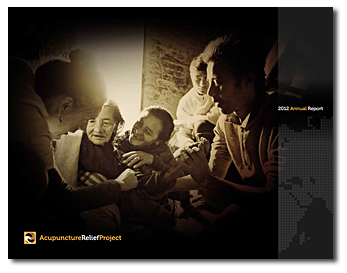 In 2012, our Third World Medicine Immersion Program continued to attract passionate and qualified volunteer practitioners who provided over 10,000 patient visits at our clinic facilites in Nepal. These volunteers worked six days a week and participated in over 60 hours of continuing education focused on improving their skills in case evaluation, treatment planning and patient progression. At the completion of thier stay, each practitioner presented a case study for peer review. These case studies help us analyze the efficacy of our clinic efforts. For their participation in this course, our volunteer practitioners received 54 Professional Development Activity (PDA) credits from the National Certification Commission of Acupuncture and Oriental Medicine (NCCAOM).
In 2012, our Third World Medicine Immersion Program continued to attract passionate and qualified volunteer practitioners who provided over 10,000 patient visits at our clinic facilites in Nepal. These volunteers worked six days a week and participated in over 60 hours of continuing education focused on improving their skills in case evaluation, treatment planning and patient progression. At the completion of thier stay, each practitioner presented a case study for peer review. These case studies help us analyze the efficacy of our clinic efforts. For their participation in this course, our volunteer practitioners received 54 Professional Development Activity (PDA) credits from the National Certification Commission of Acupuncture and Oriental Medicine (NCCAOM).
Acupuncture Relief Project also completed the analysis of our Patient Reported Outcome Measures (PROM) data. This small research study provided demographic data and some key insights into the efficacy of our clinic and serves as a definitive piece of evidence supporting our clinical model.
2011 Annual Report
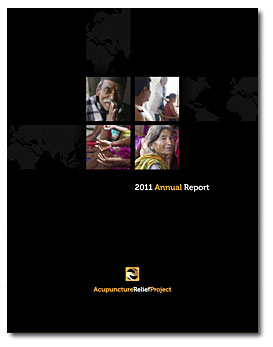 In 2011 our Third World Medicine Immersion Program was a great success with twelve volunteers serving at the Vajra Varahi clinic. These volunteers worked six days a week not only providing care to patients but also participating in over 40 hours of continuing education focusing on improving their skills in case evaluation, treatment planning and patient progression. Upon completion of their course, each practitioner presented a case study for peer review. These case studies help us analyze the efficacy of our clinic efforts and contribute to a body of evidence that supports our overall project model. We are now in the process of compiling these case studies to share with our extended Oriental Medicine community. For their participation in this course, volunteer practitioners received 40 Professional Development Activity (PDA) credits from the National Certification Commission of Acupuncture and Oriental Medicine (NCCAOM).
In 2011 our Third World Medicine Immersion Program was a great success with twelve volunteers serving at the Vajra Varahi clinic. These volunteers worked six days a week not only providing care to patients but also participating in over 40 hours of continuing education focusing on improving their skills in case evaluation, treatment planning and patient progression. Upon completion of their course, each practitioner presented a case study for peer review. These case studies help us analyze the efficacy of our clinic efforts and contribute to a body of evidence that supports our overall project model. We are now in the process of compiling these case studies to share with our extended Oriental Medicine community. For their participation in this course, volunteer practitioners received 40 Professional Development Activity (PDA) credits from the National Certification Commission of Acupuncture and Oriental Medicine (NCCAOM).
Acupuncture Relief Project also conducted a Patient Reported Outcome Measures (PROM) research study
2010 Annual Report
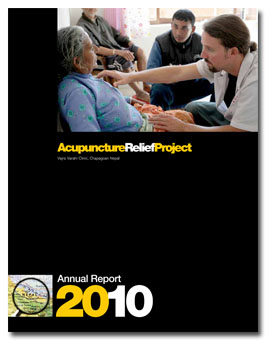 2010 was a pivotal year for Acupuncture Relief Project. We had thirteen volunteers serve at the Vajra Varahi clinic in Nepal who provided over 9,000 acupuncture treatments and medical consultations. These volunteers worked six days a week and accomplished a total of 395 treatment days of service. Their efforts produced notable successes in treating paralysis/stroke, chronic pain, gastrointestinal disorders, and breathing difficulties such as asthma and emphysema.
2010 was a pivotal year for Acupuncture Relief Project. We had thirteen volunteers serve at the Vajra Varahi clinic in Nepal who provided over 9,000 acupuncture treatments and medical consultations. These volunteers worked six days a week and accomplished a total of 395 treatment days of service. Their efforts produced notable successes in treating paralysis/stroke, chronic pain, gastrointestinal disorders, and breathing difficulties such as asthma and emphysema.
In 2010 we introduced the Third World Medicine Immersion Program, which is a continuing education program designed to improve practitioners’ diagnostic skills and to equip them to safely perform in rural third world environments.
Our Mission
Acupuncture Relief Project, Inc. is a volunteer-based, 501(c)3 non-profit organization (Tax ID: 26-3335265). Our mission is to provide free medical support to those affected by poverty, conflict or disaster while offering an educationally meaningful experience to influence the professional development and personal growth of compassionate medical practitioners.
